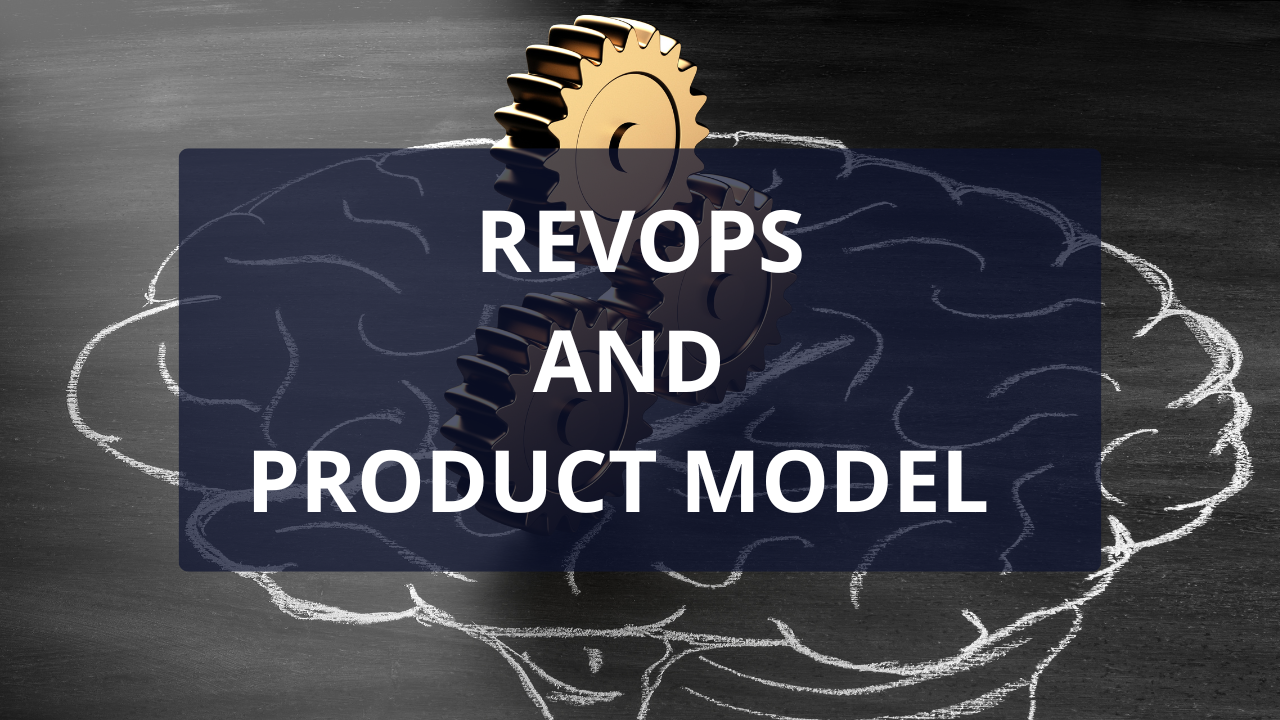
Streamlining for Growth
In today’s fast-paced business landscape, the need for efficiency, alignment, and impactful results has never been greater. Two powerful frameworks, Revenue Operations (RevOps) and Outcome-Driven Product Management (ODPM), are reshaping the way organizations operate, driving significant changes in both internal processes and customer interactions. This article explores the transformative potential of RevOps, delves into the core principles of ODPM, and highlights how integrating these approaches can address stakeholder management challenges and enhance the effectiveness of product-led organizations or as I (along with a lot of other product people) prefer to call them, orgaizations operating in Product Model.
Key Benefits of RevOps
- Alignment Across Teams: RevOps promotes a unified approach, ensuring that sales, marketing, and customer success teams are on the same page. This alignment reduces friction and enhances cooperation.
- Data-Driven Decision Making: Centralizing data from different departments provides a comprehensive view of the customer journey and key performance indicators (KPIs), enabling more informed decision-making.
- Process Optimization: By standardizing and streamlining processes, RevOps eliminates inefficiencies and enhances productivity.
- Enhanced Customer Experience: With aligned teams and integrated data, organizations can deliver a more cohesive and satisfying customer experience.
- Strategic Growth: RevOps helps in developing and implementing strategies that are directly tied to revenue growth and business objectives.
RevOps is fundamentally changing the way businesses operate by ensuring that every action taken by sales, marketing, and customer success teams is aligned with the overarching goal of driving revenue and enhancing customer satisfaction.
Revenue Operations (RevOps) is a holistic approach designed to optimize and align processes across all revenue-generating teams within an organization, including sales, marketing, and customer success. By breaking down silos and fostering collaboration, RevOps ensures that every department works towards common objectives, ultimately improving efficiency and driving revenue growth.
Outcome-Driven Product Management: Focusing on Value and Behavior Change
While RevOps focuses on aligning internal processes, Outcome-Driven Product Management (ODPM) emphasizes delivering value and achieving specific business outcomes. Unlike product management of the transitional phase (the one that came right after IT Project Management and was very similar to Product Owner’s role) which often centers on features and outputs, ODPM prioritizes the end results—particularly changes in behavior among users, teams, and the business itself.
Core Principles of ODPM
- Customer-Centricity: Understanding and addressing the needs, pain points, and goals of customers is paramount.
- Value Definition: Clearly defining what constitutes value for both the customer and the business.
- Outcome Identification: Setting precise, measurable outcomes that the product or feature aims to achieve.
- Behavior Change: Focusing on the changes in behavior that indicate the desired outcomes are being met.
- Hypothesis-Driven Development: Continuously testing and validating hypotheses through experimentation and feedback.
- Metrics and Measurement: Using data to track progress and inform decisions.
- Iterative Approach: Emphasizing regular reassessment and adaptation based on feedback and outcome metrics.
ODPM ensures that product development efforts are directly tied to achieving meaningful results, fostering a more continuous approach to meeting customer and business needs.
Navigating Stakeholder Management Challenges
One of the perennial challenges in product management is stakeholder alignment. Product managers often struggle to bring diverse stakeholders—from executives to developers—into agreement on priorities and strategies. This misalignment can lead to conflicting goals, inefficient processes, and ultimately, suboptimal product outcomes.
However, RevOps offers a (partial) solution to these challenges:
- Unified Objectives: By aligning all revenue-generating teams around shared goals, RevOps minimizes conflicts and ensures everyone is working towards the same outcomes from the sales, customer success and marketing perspectives.
- Integrated Data and Insights: Centralizing data from the mentioned departments as input sources provides a single source of truth, making it easier to justify decisions and align stakeholders.
- Enhanced Communication: RevOps fosters better communication and collaboration across teams, reducing misunderstandings and ensuring everyone is on the same page.
- Strategic Alignment: With a clear focus on revenue and customer satisfaction, RevOps ensures that stakeholder efforts are strategically aligned with business goals.
The Synergy of RevOps and ODPM in Product-Led Organizations
For organizations operating in Product Model, where the product itself is the primary driver of customer acquisition, retention, and revenue, the integration of RevOps and ODPM can be particularly beneficial. Here’s how:
- Holistic Approach: Combining RevOps’ cross-departmental alignment with ODPM’s outcome focus creates a holistic approach to both product development and revenue generation.
- Improved Product Strategy: ODPM ensures that products are developed with clear outcomes in mind, while RevOps links these outcomes with overall business goals.
- Seamless Customer Experience: The integrated data and aligned processes of RevOps, combined with the customer-centric focus of ODPM, result in a seamless and satisfying customer experience.
- Agility and Adaptability: Both frameworks emphasize iterative processes and data-driven decisions, enabling organizations to quickly adapt to market changes and customer feedback.
- Enhanced Collaboration: The unified objectives and improved communication fostered by RevOps complement the cross-functional collaboration essential to ODPM, creating a more cohesive and effective product creation environment.
Conclusion
RevOps and Outcome-Driven Product Management are transforming the way businesses operate, aligning processes, and focusing on meaningful outcomes. By breaking down silos, centralizing data, and prioritizing customer-centric value, these frameworks address the challenges of stakeholder alignment and enhance the effectiveness of product-led organizations. As the business landscape continues to evolve, embracing these approaches will be crucial for companies seeking to drive growth, improve efficiency, and deliver exceptional customer experiences.
Strategic Product Management: The Ultimate Guide to Driving Business Success
Are you ready to take your product management skills to the next level? Our Strategic Product Management Course is the perfect way to learn the proven strategies and techniques that will help you develop and launch successful products.
In this course, you will learn the 7-Step Framework for Strategic Product Management, a powerful framework that will guide you from start to finish through the product development process. You will also gain insights from real-world case studies and learn from experienced product managers who have successfully launched innovative products in a variety of industries.
Whether you’re a budding product manager or a seasoned professional, our course can help you:
- Develop a deep understanding of your target market and their needs
- Identify and validate product ideas
- Build a strong product roadmap
- Prioritize features and functionality
- Launch successful products that meet customer needs and business goals.
Sign up for our Strategic Product Management Course today and start your journey to becoming a world-class product manager.

